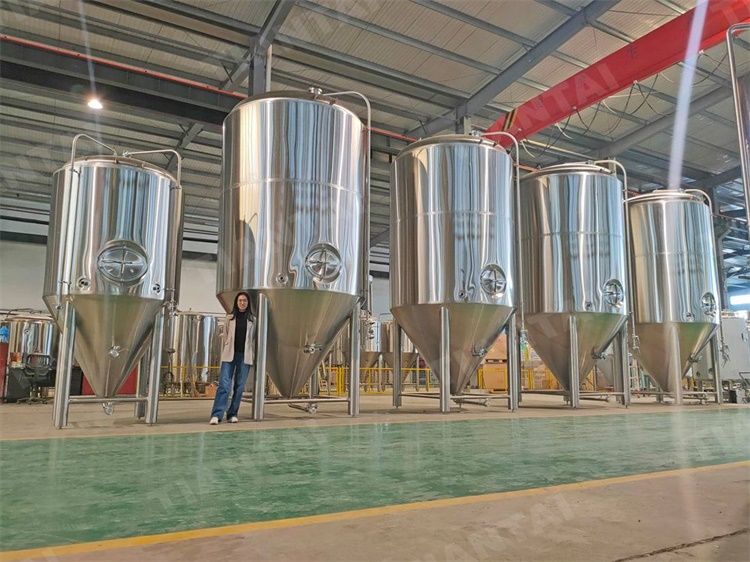.jpg)
Beer fermenter Temperature Control:
Ale: Ale fermentation typically occurs at warmer temperatures, usually between 60-75°F (15-24°C). To maintain these temperatures, you may need a temperature-controlled fermentation chamber or a fermentation heater.
Lager: Lager fermentation requires cooler temperatures, usually around 45-55°F (7-13°C) or even lower. You will need a refrigeration system or a fermentation chamber capable of maintaining these colder temperatures. Some advanced setups may involve glycol chillers or temperature-controlled conical fermenters.
Mash and Boil Vessel:
Ale: For brewing ales, a standard boil kettle is typically sufficient. It should have enough capacity to hold your desired batch size and should be equipped with a thermometer, a ball valve for draining, and a heating source such as a gas burner or an electric element.
Lager: Lagers often require a mashing vessel capable of performing step mashes. This vessel allows for precise temperature control during the mashing process. Some brewers use dedicated mash tuns or multi-vessel systems that include a hot liquor tank and a separate lauter tun. These systems enable step mashing and efficient lautering.
Fermentation Vessels:
Ale: Ale fermentation vessels can include standard glass carboys, plastic buckets, or stainless steel fermenters. Ensure that the vessel is suitable for the batch size you're brewing, has an airtight seal or airlock to allow carbon dioxide to escape, and can handle the temperature range required for ales.
Lager: Lager fermentation vessels are typically similar to those used for ales, such as glass carboys, plastic buckets, or stainless steel fermenters. However, temperature control is crucial.
Yeast Management:
Ale: Ale yeast is generally top-fermenting and works well at warmer temperatures. You may need yeast starters, Erlenmeyer flasks, or stir plates for yeast propagation and management.
Lager: Lager yeast is bottom-fermenting and requires precise temperature control and longer maturation periods. Proper yeast pitching rates and propagation techniques, such as yeast starters and temperature-controlled yeast propagation equipment, are often employed.
Aging and Conditioning:
Ale: Ales can be ready for consumption relatively quickly, but some styles benefit from aging and conditioning. Bottles or kegs for packaging, along with a CO2 source for carbonation, may be necessary.
Lager: Lagers typically require a longer aging or lagering period to achieve their characteristic smoothness and clarity. It's common to use dedicated lagering tanks or refrigeration systems during this phase.
Remember that these are general guidelines, and specific equipment requirements may vary based on individual brewing techniques, batch sizes, and the level of control you want to maintain over the brewing process.
Thank you very much for your reading.
Contact person:Helen Lee
Contact email:[email protected]


.jpg)



Get In Touch